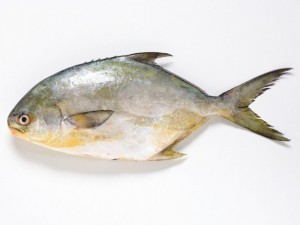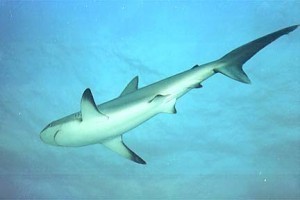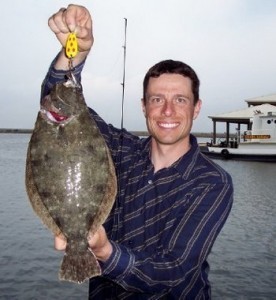What is the Size of a Pompano?
The size of the pompano will vary among the species. The  Florida pompano (Trachinotus carolinus) can attain lengths of 18 inches (45 cm) and weigh 3 lbs (1.5 kg). Another species, the permit, is 3 ft (90 cm) long and over 30 lbs (14 kg).
Florida pompano (Trachinotus carolinus) can attain lengths of 18 inches (45 cm) and weigh 3 lbs (1.5 kg). Another species, the permit, is 3 ft (90 cm) long and over 30 lbs (14 kg).
Classification
The pompano belongs to the Trachinotus genus in the Carangidae family. They are in the Perciformes order. The Carangidae family is better known as jacks. The term pompano is also used for other fish that resemble the ones in the Carangidae family.
Physical Description
The pompano looks like a mackerel with a deep body. They have a narrow base and the tail is forked. The fish have no teeth and have a silver color. There are 20 known species. Whatever the sizes of the pompano, almost all of them are highly regarded seafood. Many of them are also valued as game fish.
The Permit (Trachinotus falcatus)
The permit is very similar to the pompano and classified under the Carangidae family. These creatures feed on crustaceans and small fish. The fish was first studied by Carolus Linnaeus in his Systema Naturae (1758).
The word Trachinotus comes from the Greek terms trachys (rough) and noton (back). The falcatus is a Latin adjective translated as armed with scythes. This refers to the fish’s dorsal fin that emerges from the water when the fish feed close to the surface.
Anatomy of the Permit
The permit’s most notable features are the long anal fin and dorsal fins. The dorsal fin looks like a scythe, which is why the Latin adjective is applied to it.
Compared to the size of the pompano (the Trachinotus carolinus) it is much bigger, reaching three feet. The permit has a forked tail and they have laterally compressed bodies. That is why the fish appears so thin when seen up front.
The permit usually has six to seven dorsal spines, with the soft rays numbering 18 to 21. There are a couple of spines on the anal fin, although some species have three. The anal fin has 16 to 18 soft rays. The anterior lobes of the anal and dorsal fins are dark.
The fish also has a yellow-orange patch around their belly. This is just to the anal fin’s front. They have dark pectoral fins. The permit does not have any scutes.
Habitat and Distribution
The fish are frequently found at tropical, shallow waters. The fish can also be seen at the muddy bottoms, channels, and flats. Some of the permit like to travel alone, but others school. Many of them like to stay near the shore. Some even go to brackish places.
However, all the species spawn offshore. The newborn permit is typically found at the surf zone where it feeds on invertebrates. Like the other pompano, the fish can be found throughout the Atlantic.
The size of the pompano will differ slightly among the other species. The other species include the Southern pompano, the Snubnose pompano, the Cayenne pompano, the Guinean pompano, the Indian pompano and the Gafftopsail pompano.





